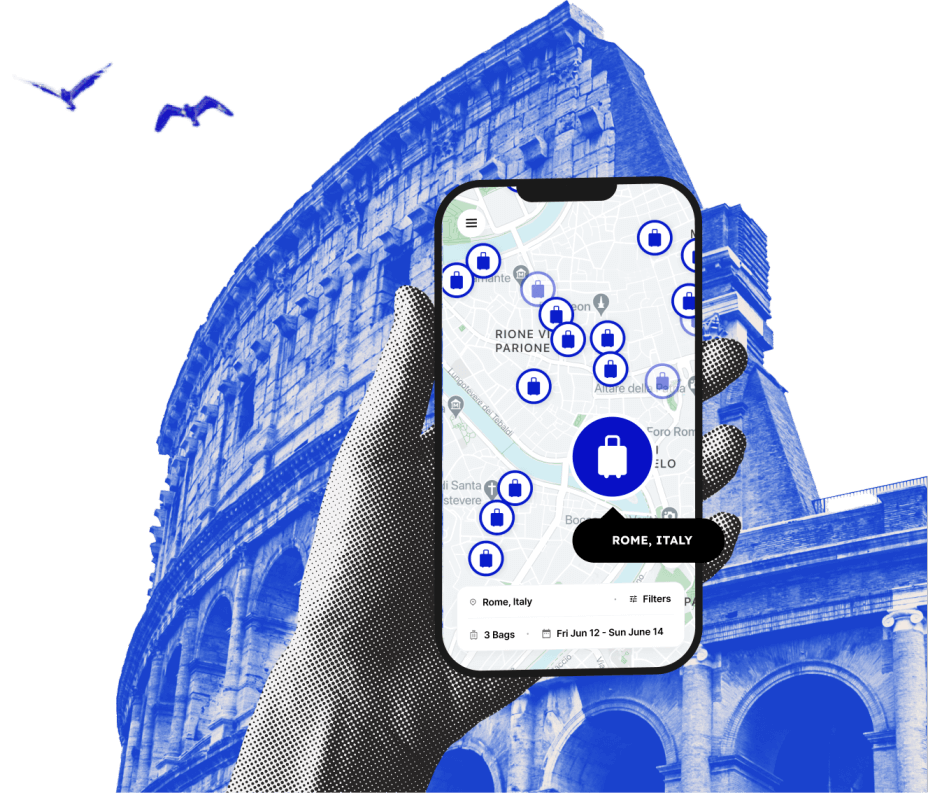How To Get Around Venice
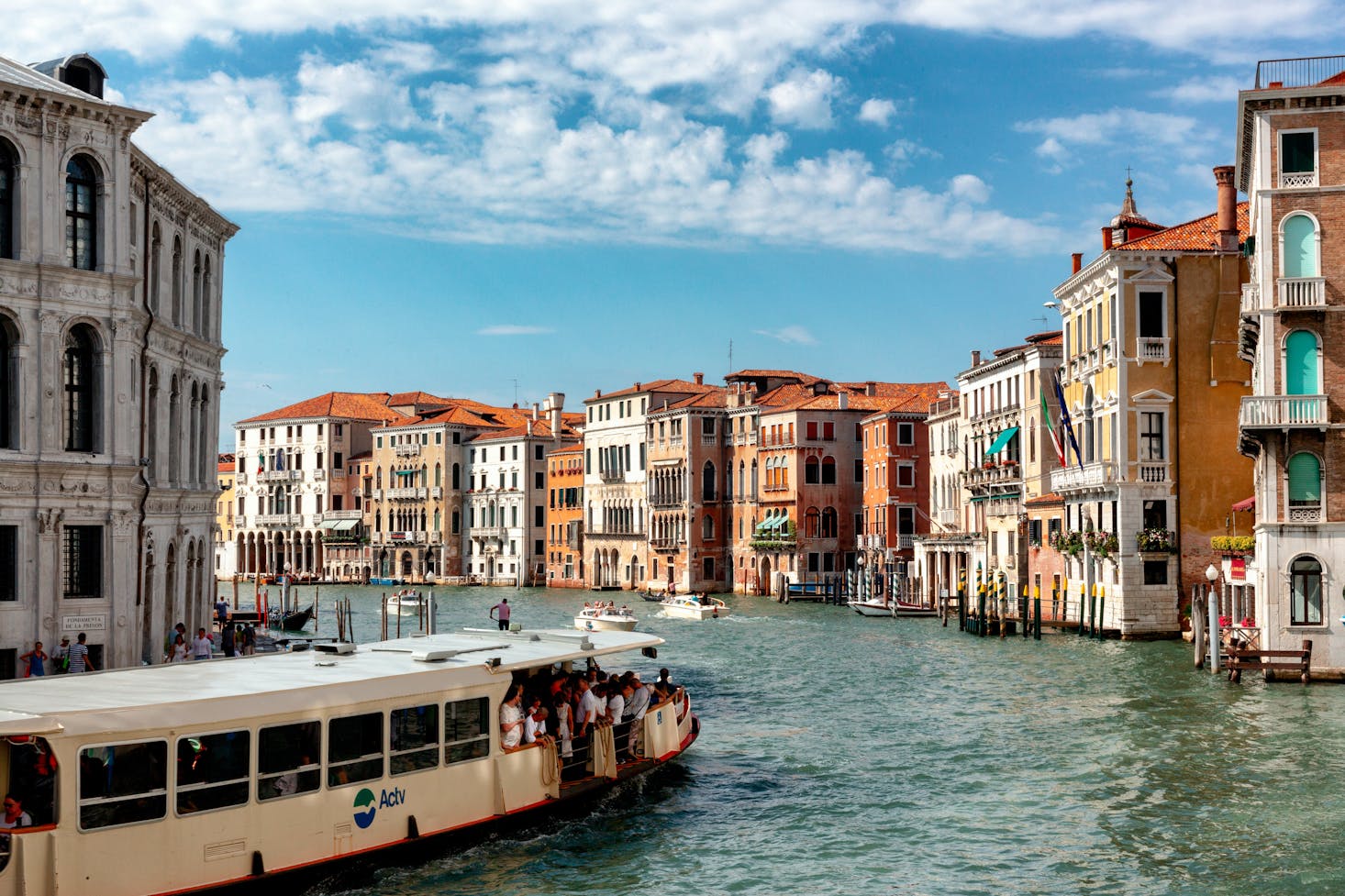
With ancient buildings rising directly out of the blue waters of a lagoon, the Italian city of Venice is a dream-like destination that is a fixture on just about everyone's travel bucket list. But in a city where canals take the place of roads, getting around can be a challenge. In fact, getting around Venice is nothing like navigating your way through most other cities. All those canals certainly look beautiful, but they present a navigational challenge for anyone looking to explore Venice and the outer islands in the Venetian lagoon.
Luckily, Bounce is here to help. By offering luggage storage in Venice and in cities around the world, Bounce makes it easy to navigate this watery city and see everything it has to offer.
Navigating Venice's public transportation system doesn't need to be difficult. Once you adjust to the canals and the city's system of water taxis and water buses, transportation in Venice starts to make sense. Whether you're looking to see historic sights or experience the best shopping in Venice, the public transport network - plus your own two feet - can get you where you need to go.

Love discounts and traveling?
Sign up for our newsletter and get 10% off your next booking.
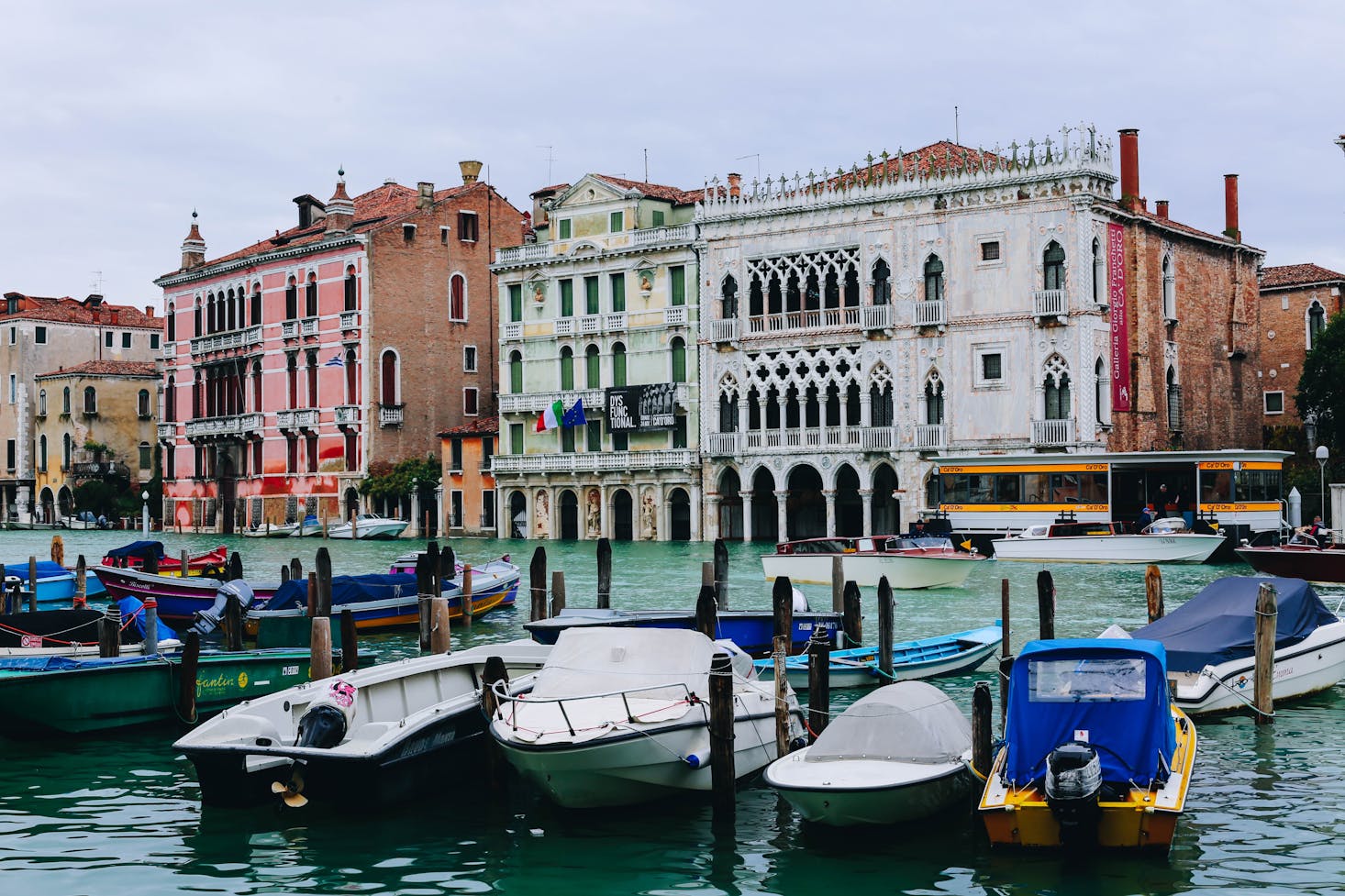
How to get around Venice by train
Given that Venice is famous as a city of canals, it surprises many people to find out that Venice does have a train station. Santa Lucia railway station is located on the Canal Grande and is the gateway to exploring Venice for millions of visitors every year. As a result, this train station gets extremely busy, especially in the summer season, so bring your patience and try not to carry heavy bags with you.
Trains arrive at Santa Lucia from across Italy and other European destinations to reach this unique city. But Santa Lucia is the end of the line. Located at the northwest edge of the ancient city, this is as far as a train will take you. Venice has no tram lines, and obviously no Metro system, as it would be full of water. Once you step out of Venice train station, you'll need to find another way to get around.
How to get around Venice by bus
The other main way to reach Venice is by bus. The island city is connected to the mainland by a long causeway that carries both the railway line and vehicle traffic. City buses from the mainland section of Venice and long-distance buses from other Italian cities and European destinations can reach the heart of Venice this way. All of the bus lines end up in the same place: Piazzale Roma, located right next to Santa Lucia train station. This piazza functions as Venice's main bus and rail terminus, and it's as far as wheels will take you in the city.
If you're arriving in the city via Venice Marco Polo Airport, this is probably where you're going to end up. A shuttle bus connects the airport to the city, stopping in Piazzale Roma. If you choose to take a taxi or a transfer service, you'll end up here too, since this is as far as cars can go in the historic center of Venice. Marco Polo Airport is connected to the Piazzale by city bus route 5, which offers a cheaper alternative to the privately owned shuttle buses, which may be more convenient. Either way, you end up in the same place.
Piazzale Roma is also a stop on the Venice People Mover. This shuttle train connects the Port of Venice to Piazzale Roma, making it popular with cruise ship passengers heading into the city. It also serves the island of Tronchetto, where you'll find a large parking garage that offers the only place in Venice to leave a car.
Ultimately, the vast majority of people who visit Venice arrive at either Piazzale Roma or Santa Lucia station one way or another. Given that the two are right next to each other, connected by a short bridge, it's easy to imagine that this is one of the busiest parts of the ancient city. And from here, the normal rules no longer apply. If you want to explore Venice more, you're going to need to try out some new methods of getting around.
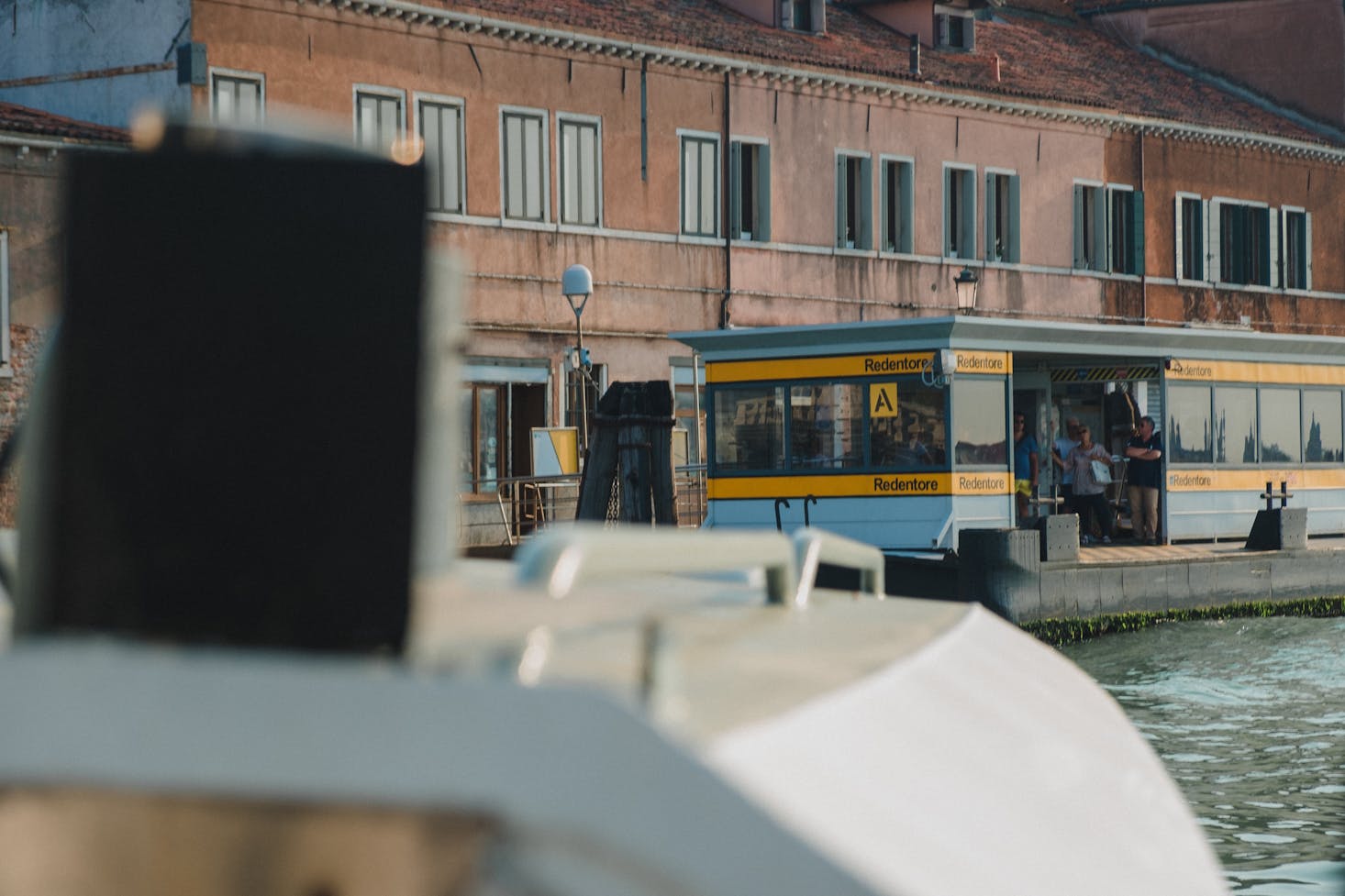
How to get around Venice by boat
Past Piazzale Roma, Venice becomes the city of canals that it's known as in popular imagination. Bisected by the Grand Canal, which has only four bridges crossing it, the city becomes a labyrinth of narrow streets and canals. But that's part of the fun.
Locals and tourists alike rely on Venice's network of boats to get around the city. Known as vaporetti in plural and vaporetto in singular, these boats take the place that buses occupy in other cities. You'll find a vaporetto stop outside the railway station and close to most of the main attractions. The vaporetto service mostly travels along the Grand Canal, serving the historic center of the city and connecting other islands to the city center.
There are several vaporetto lines you need to know about when visiting Venice. Line 1 is probably the most important for tourists, as it travels along the Grand Canal from Piazzale Roma to Venezia Lido, a separate island where you'll find some of the city's best beaches. Along the way, it stops at many of the city's top tourist attractions, such as the Rialto Bridge and Piazza San Marco. Lines 3 and 7 connect the city with the popular island of Murano, and line 10 runs from Piazza San Marco direct to Venezia Lido.
Make no mistake; this water bus is very much an everyday part of the city's public transportation infrastructure, and for those who live in Venice, it's long since lost all its romance. But for visitors, a vaporetto ride along the Grand Canal is not only a great way to get around, but also offers a kind of poor person's cruise through the city. Seating on the vaporetti is extremely limited, and most people choose to stand. You'll get a better view of the Canal Grande that way anyway.
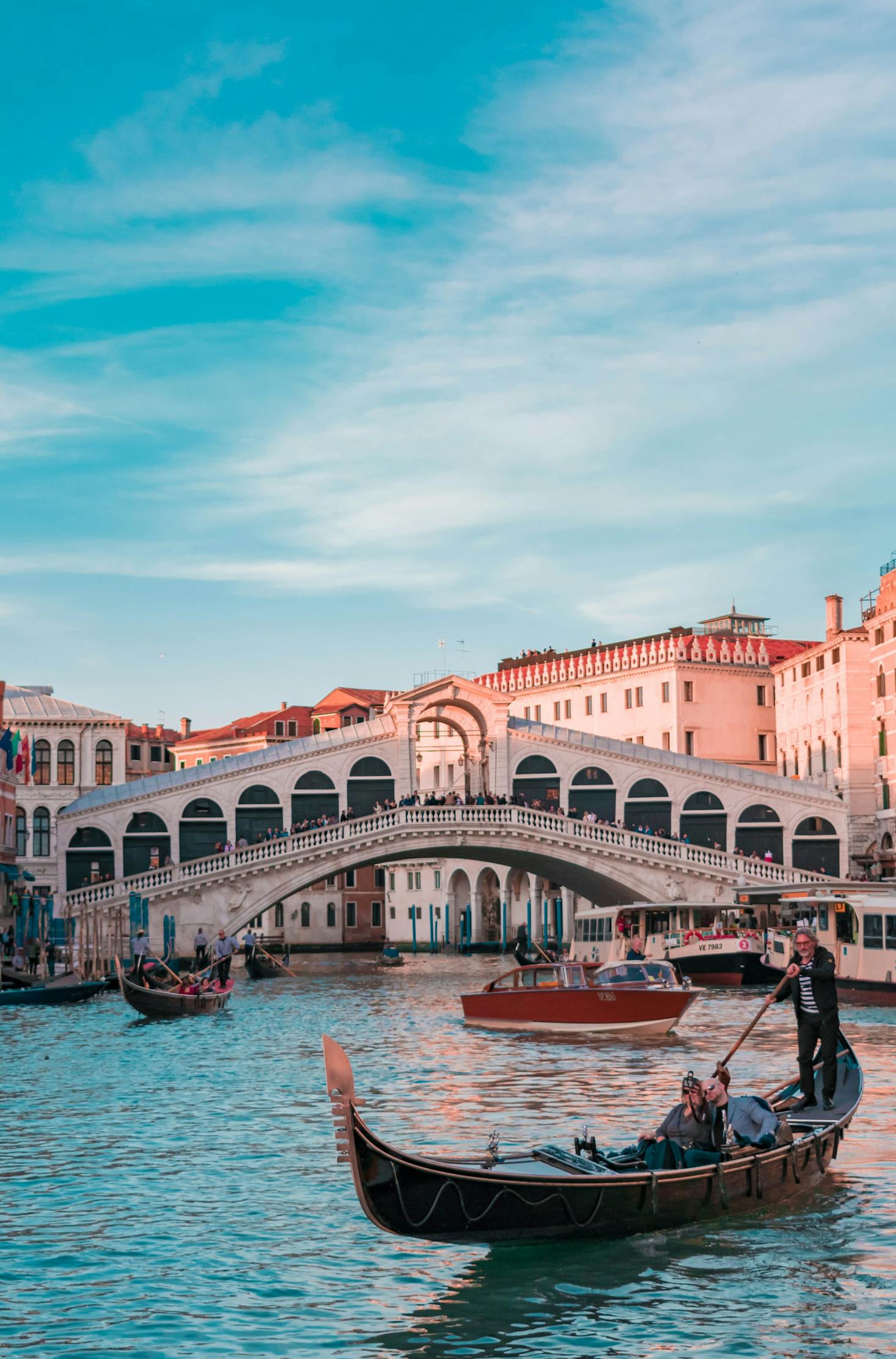
You can buy vaporetto tickets at any stop, and you can also purchase them on board. Alternatively, you can purchase tickets online if you like to be prepared. A vaporetto trip isn't cheap, with a single ticket costing a painful eight euros. The ticket is valid for 75 minutes after validation, so it's not too bad a deal if you're going all the way to the Lido, but pretty expensive if you're only going one stop. You have to validate your ticket in the machine on your way to board the boat, otherwise, it doesn't count as a valid ticket. And after all, you're on a boat, so it's not like you're going to be able to run away from the ticket inspector.
Away from the Grand Canal, plenty of smaller canals wind their way through the city, but the vaporetti don't go there. Vaporetti principally serve the main tourist areas of the city. If you're looking for a way to cross the Grand Canal, there's also the traghetti. These are multi-passenger gondolas that act as ferries so that you can cross the Grand Canal without having to go out of your way to find the nearest bridge. You can find them by looking for the yellow sign with the black gondola symbol close to the water. A crossing costs two euros, and you pay the gondolier directly. Most locals stand up in the boat while making the crossing, so if your balance is good, you can give that a try.
In Venice, vaporetti take the place of buses, and water taxis take the place of regular taxis. If you want to get somewhere the public boats don't go, or you just want to travel in style, you'll find plenty of water taxi companies that can take you almost anywhere in the city. However, a private water taxi doesn't come cheap. Still, if you have the budget and you want to explore some of the fascinating islands around Venice, this is a great way to do it. Don't forget to take lots of photos to capture the experience, because you'll certainly pay plenty for a water taxi ride.
Of course, you can't talk about boats in Venice without mentioning gondolas. Once the main way for people to get around the city, these have become very much a tourist trap. But that doesn't mean they're not worth doing. Taking a gondola ride through Venice is a unique experience, and one of the most unmissable things to do in Venice at night. since they'll generally just take you around in a circle. But they do offer an incredible – albeit expensive – way to enjoy the city.

How to get around Venice by car
If you're wondering how to get around Venice by car, the simple answer is that you don't. Motorized vehicles can't get any closer to the historic center of the city than Piazzale Roma and the parking facility at Tronchetto. From there, your only option for transportation in Venice is to travel by boat or on foot.
However, the region around Venice also has a lot to explore, and public transport may not get you everywhere you need to go. If you do intend to bring a car to Venice, it might be a good idea to look for a hotel in Mestre or elsewhere on the mainland. That way, you can park your car at your hotel and take public transport, whether bus or train, into the historic center of the city when you feel like exploring. You can also take a water bus water taxi from the mainland to the city center.
Can I get around Venice on foot?
Despite its international fame, Venice is a deceptively small city. That's especially true of the city's historic heart, which is where most people want to go. A walk from Santa Lucia train station to Piazza San Marco takes around 30 minutes and brings you from one end of the ancient city to the other. As a result, Venice is one of the most pedestrian-friendly cities in the world. Plus, many of the city's attractions can only be reached by walking.
Walking in Venice is an absolute delight, and every corner you turn will bring you new scenic views and attractions to enjoy. Be warned, though, that navigating Venice is tricky. The major tourist attractions have signs posted that will point you in the right direction, but you're more or less guaranteed to get lost sooner or later. Learn to enjoy it. After all, that's part of the fun of visiting Venice. Bring a good GPS and comfortable shoes, and walking around in Venice will be an absolute pleasure.
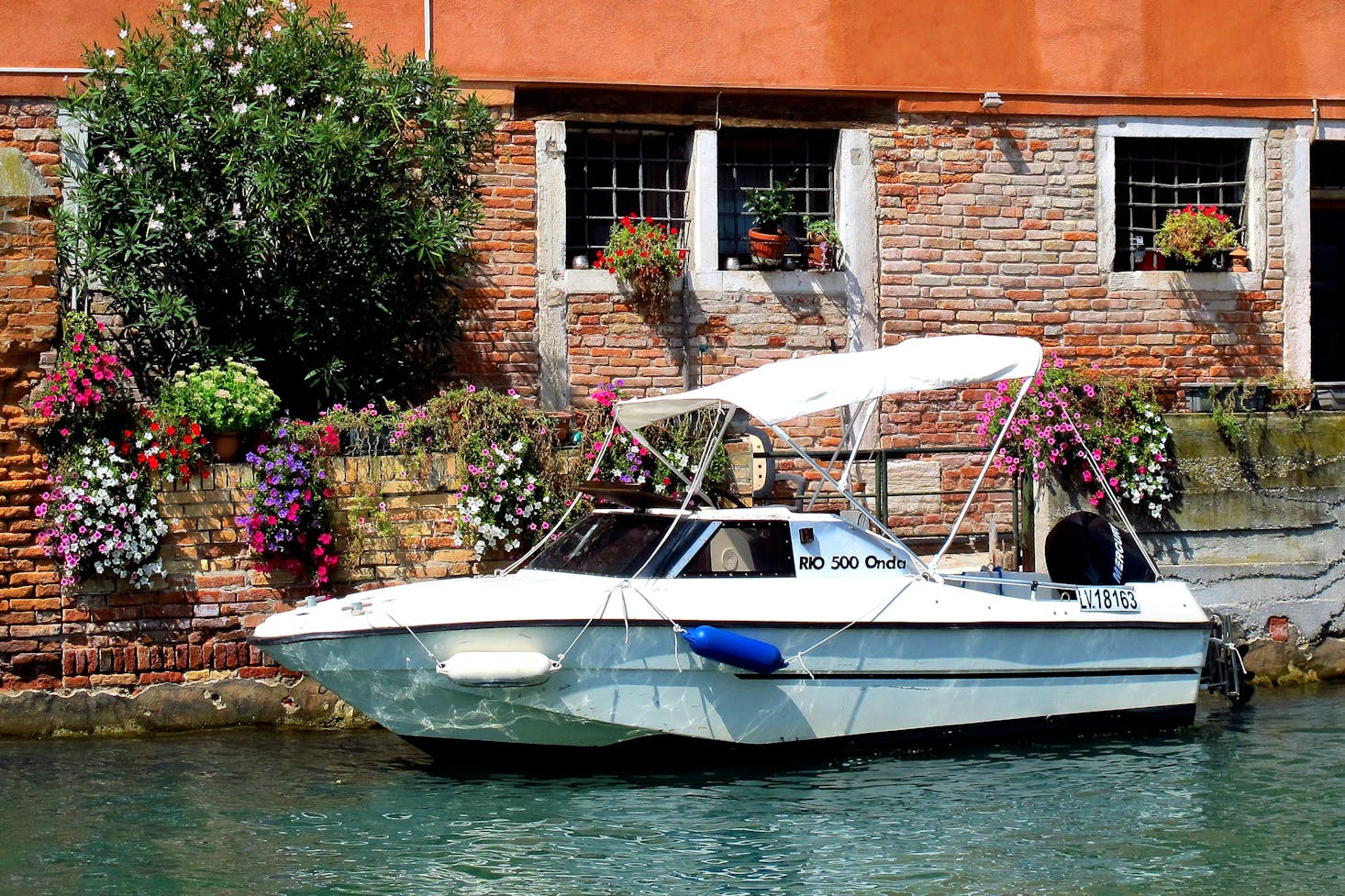
Conclusion
For those not used to it, the idea of getting around the city by water taxi or water bus may seem daunting. But transportation in Venice is fairly simple once you get the hang of it, and the city's official water bus network is almost an attraction in itself. Plus, Venice is the ideal city to explore on foot and allow yourself to get lost in, so not knowing where you're going really isn't that big of a deal. The Grand Canal can help to orientate you as you travel through the city, and the water-based transportation in Venice makes it easy to get to all the major sites.
The important thing is to not carry more than you need to as you travel on foot or by boat. Drop off your belongings at a Bounce luggage storage in Venice, and you'll be able to enjoy the experience of getting around in this legendary city.

Love discounts and traveling?
Sign up for our newsletter and get 10% off your next booking.
